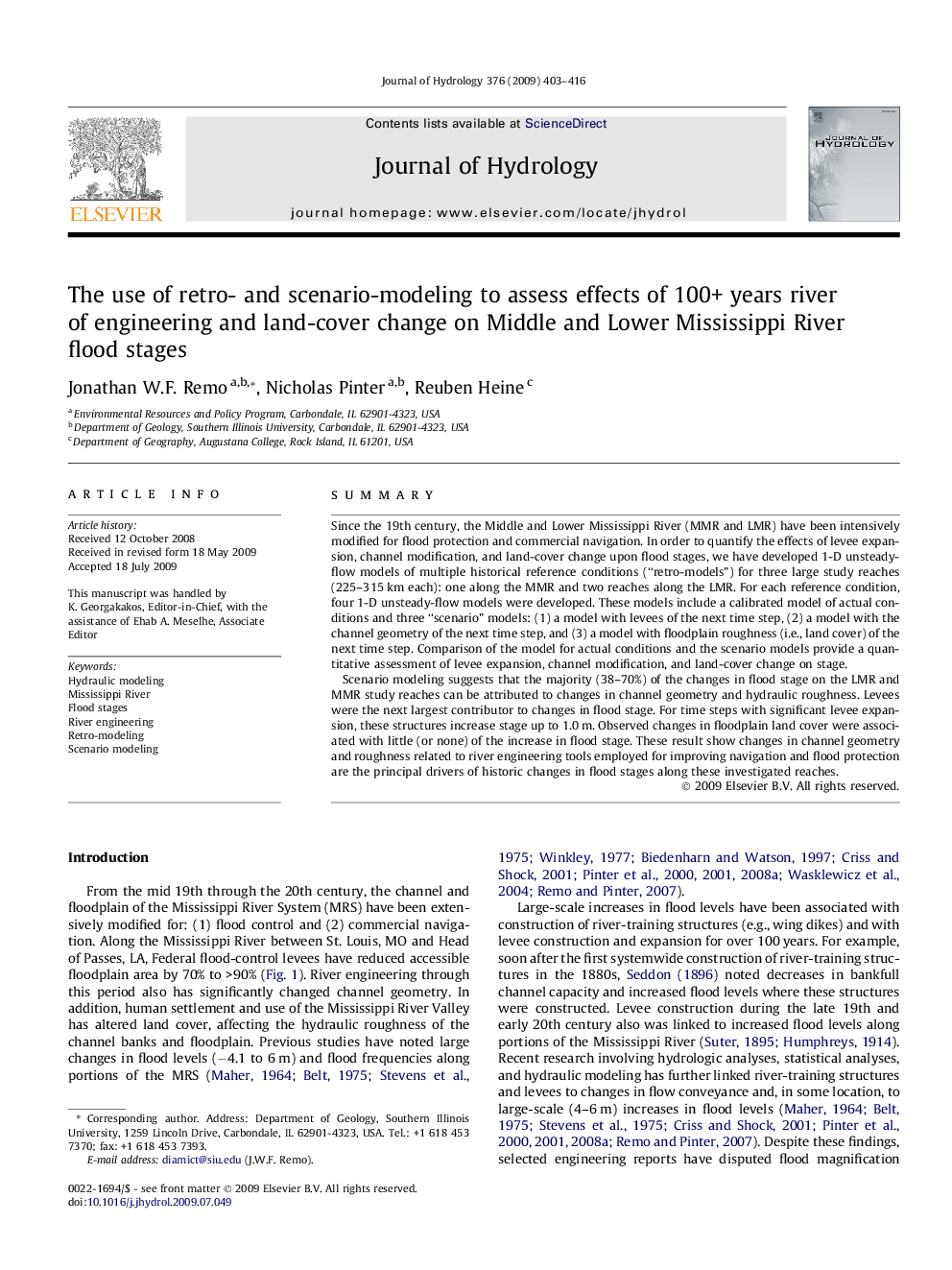| Article ID | Journal | Published Year | Pages | File Type |
|---|---|---|---|---|
| 4578607 | Journal of Hydrology | 2009 | 14 Pages |
SummarySince the 19th century, the Middle and Lower Mississippi River (MMR and LMR) have been intensively modified for flood protection and commercial navigation. In order to quantify the effects of levee expansion, channel modification, and land-cover change upon flood stages, we have developed 1-D unsteady-flow models of multiple historical reference conditions (“retro-models”) for three large study reaches (225–315 km each): one along the MMR and two reaches along the LMR. For each reference condition, four 1-D unsteady-flow models were developed. These models include a calibrated model of actual conditions and three “scenario” models: (1) a model with levees of the next time step, (2) a model with the channel geometry of the next time step, and (3) a model with floodplain roughness (i.e., land cover) of the next time step. Comparison of the model for actual conditions and the scenario models provide a quantitative assessment of levee expansion, channel modification, and land-cover change on stage.Scenario modeling suggests that the majority (38–70%) of the changes in flood stage on the LMR and MMR study reaches can be attributed to changes in channel geometry and hydraulic roughness. Levees were the next largest contributor to changes in flood stage. For time steps with significant levee expansion, these structures increase stage up to 1.0 m. Observed changes in floodplain land cover were associated with little (or none) of the increase in flood stage. These result show changes in channel geometry and roughness related to river engineering tools employed for improving navigation and flood protection are the principal drivers of historic changes in flood stages along these investigated reaches.
